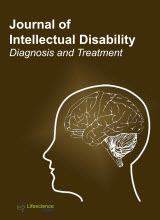jiddt
|
|
Abstract: The study is a part of research and development which aims at developing Decision Support System-based (DSS) digital identification instrument for children with learning disabilities. The first-year study consists of three stages: (a) the need analysis of the instrument, (b) the development of instrument prototypes, and (c) the validation of the digital identification instrument. Keywords: Digital instrument, identification, learning disabilities, special school, DSS-(Decision Support System).
|
|
|
Abstract: Today, the world community understands that one of the main reasons for the emergence of the global ecological crisis is the low education level, including the ecological one. On the 21st century threshold, the individual's ecological development is becoming a priority and a meaning-forming factor in state education policy. In many ways, it acts not only as a means of preserving nature but also of human civilization as a whole. Keywords: Development, process, ecological, education, Independent Kazakhstan.
|
|
|
Abstract: Objective: The control of perioperative pain and its practice can play an important role in short and long term postoperative convalescence. The aim of this study was to evaluate the effect of dexmedetomidine on postoperative pain in patients undergoing abdominal hysterectomy (TAH). Keywords: Dexmedetomidine; Abdominal Hysterectomy, Postoperative Pain.
|
|
|
Abstract: Background and Objective: Attempts have been made to confirm the diagnosis of stroke at the earliest stage and to prevent the development of neurological deficits. Tissue plasminogen activator (tPA) plays a logical role in the treatment of acute stroke by converting plasminogen to plasmin, and recent studies have shown that the drug can be injected up to four and a half hours after the onset of symptoms. The present study aimed to evaluate the effect of an in-hospital intervention to reduce door to needle (DTN) time in acute stroke patients. Keywords: Door to Needle, Door to CT, Thrombolytic plasminogen activator.
|
|
|
Abstract: Objective: Post-dural-puncture headache (PDPH) is the most common side effect associated with a lumbar puncture (LP). The present study aims to evaluate the effect of midazolam on the prevention of PDPH. Keywords: Lumbar puncture, Headache, Midazolam.
|


